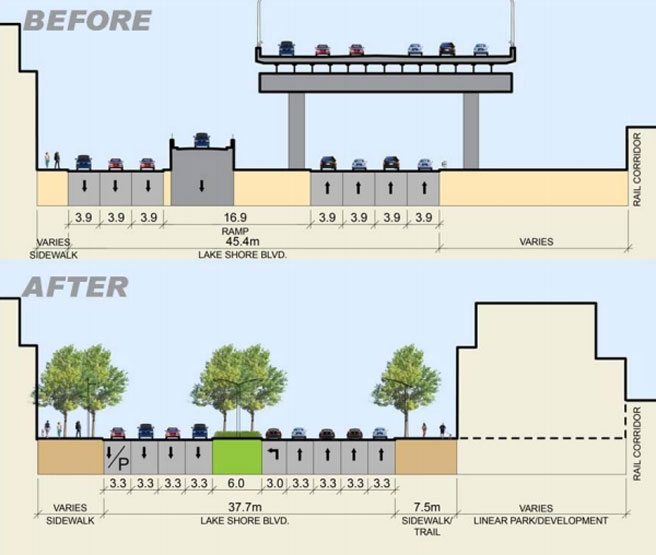Again, I never said it was busier than the subway system, or even one line. I'm not sure why you are saying I'm "misrepresenting" it when I never made such a claim. I claimed that the total spend on the Gardiner was small compared to the TTC capital spend, and that it was far from 50% of the total annual capital spend of the city. Which is true.
And apologies, Lakeshore was planned to be a meagre
9 lanes if the Gardiner was removed:
And again, it's very important to frame this discussion properly in what is actually being discussed. The options are not spending $2 billion to rehabilitate the Gardiner or $0 to not. The original option in 2016 was to spend $2 billion to keep the east Gardiner, or $1.7 billion (IIRC) to demolish and construct an urban boulevard in the east end. $300 million difference, and that was in 2016.
It's now 2023, and the City has partially implemented the hybrid plan now. That $300 million savings has evaporated. Demolition may actually cost more up front now, and in my opinion results in the creation of a traffic sewer at grade which will be much worse for the pedestrian experience than a small elevated connection would be.
Perhaps demolishing the East Gardiner now would result in some minor amount of additional land which could be developed. Perhaps it would result in lower long term maintenance costs over the period of decades. But we would get that at a delayed, higher up front cost at this point, and would result in objectively worse transportation results with significantly longer travel times and a much worse pedestrian experience.
Perhaps keeping the Gardiner in 2016 was a political decision - but to change course now and demolish it today would be equally political.





